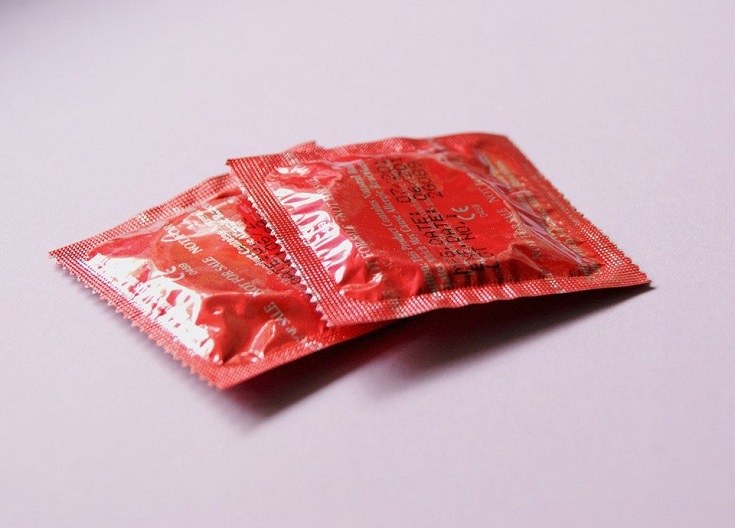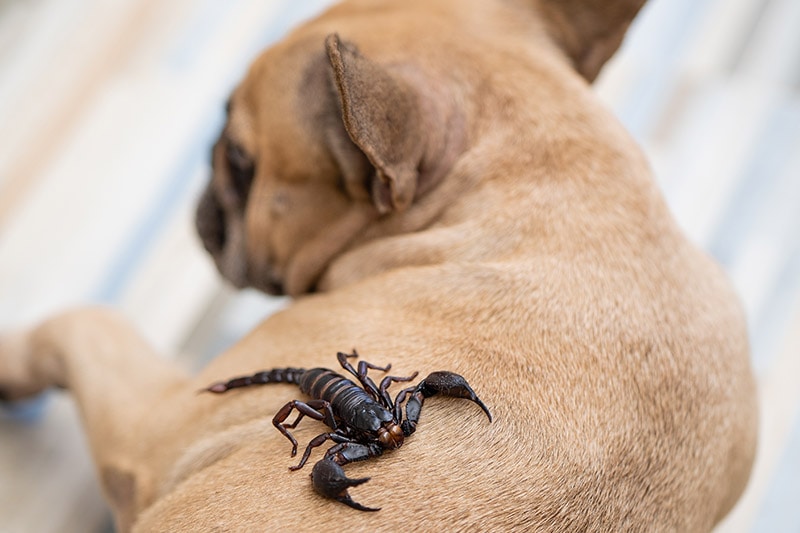What to Do If Your Dog Breaks or Rips a Nail Off: Our Vet Answers

Updated on
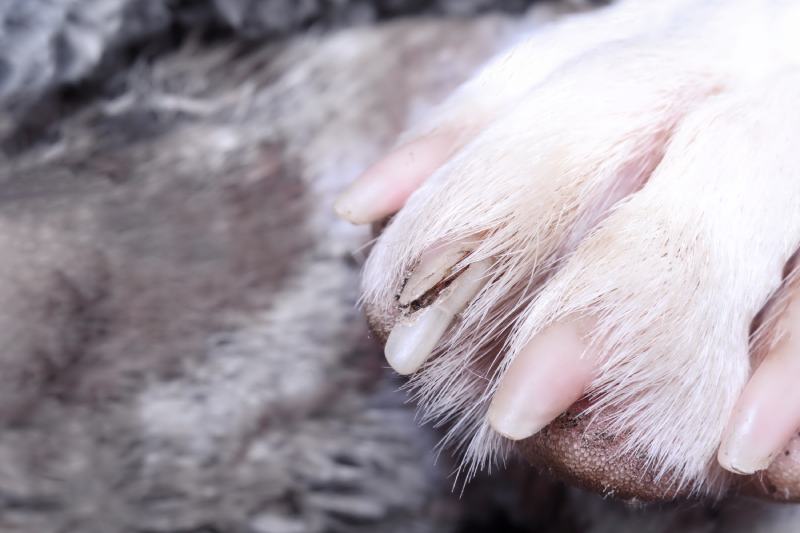
Click to Skip Ahead
If your dog has been running or leaping about the garden and suddenly starts crying and limping, it may be that they have broken a toenail, try to stay calm. There can seem to be a lot of blood from a broken toenail and it can be painful so your dog may be crying out. Fortunately most of the time, broken nails can be treated at home. The first thing to do is calm your dog and carefully check for injuries. Injuries to toenails can vary from a crack in the nail to it being torn clean off.
Keep on reading if you want to find out what you can do if your dog breaks or rips a nail.
Nail Anatomy Explained
Dogs typically have 4 toenails and a dewclaw on each front leg and 4 toenails on the back legs. There can be variation in the number of dewclaws, with some dogs having none and others even having double dewclaws.
The nail itself is made of keratin, the same material that makes up your own nails. This keratin grows from the nail bed over the vascular quick that covers the last toe bone.
If only the keratin portion of the nail breaks or cracks this is usually easily resolved. If the damage includes the quick there can be a fair amount of bleeding and discomfort. In the most severe cases the last toe bone can be involved too, but this is thankfully uncommon.

What to Do If Your Dog Breaks or Rips Off a Nail
1. Restrain Your Dog
When a nail breaks or rips, it can be painful, and the pain can make your dog reluctant to be handled, depending on their level of pain and temperament. Gently restraining your dog will prevent them from doing more harm to the already broken or ripped nail. Moreover, keeping your dog still will help the blood clot faster if the toe is bleeding. If your dog does not want to be handled it is important to keep both yourself and them safe. Pop them into a room where it will keep them relatively confined and will be easy to mop the floor clean, such as a kitchen or bathroom.
You may need two people to get a proper look at the sore toe, one to hold and one to look.
If you are unable to safely assess the nail, or your dog is in considerable discomfort, you should take them to your veterinarian for treatment.
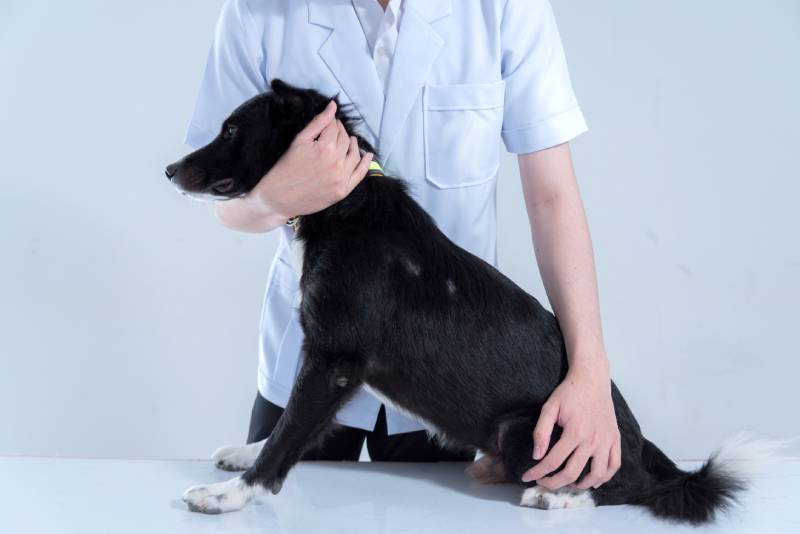
2. Evaluate the Situation
Take your time to examine your dog’s nails carefully. Is it broken, cracked, or ripped? Is it bleeding? Is it still partly attached but sticking out at an odd angle? If your pet seems to be in a great deal of pain or is bleeding excessively and you can’t stop it, you need to go to the vet.
If you cannot figure out where the bleeding or pain is coming from, it is also best to take your dog to your veterinarian for assessment.
3. Stop the Bleeding
If your dog’s broken nail bleeds, don’t panic. To stop the bleeding, wrap their paw in gauze, a paper towel, or a clean cloth. Apply gentle but firm pressure to the area for 5–10 minutes until the bleeding stops. If the bleeding does not stop, you can use cornstarch, a styptic pencil, or styptic powder. If it still doesn’t stop then go to the vet.
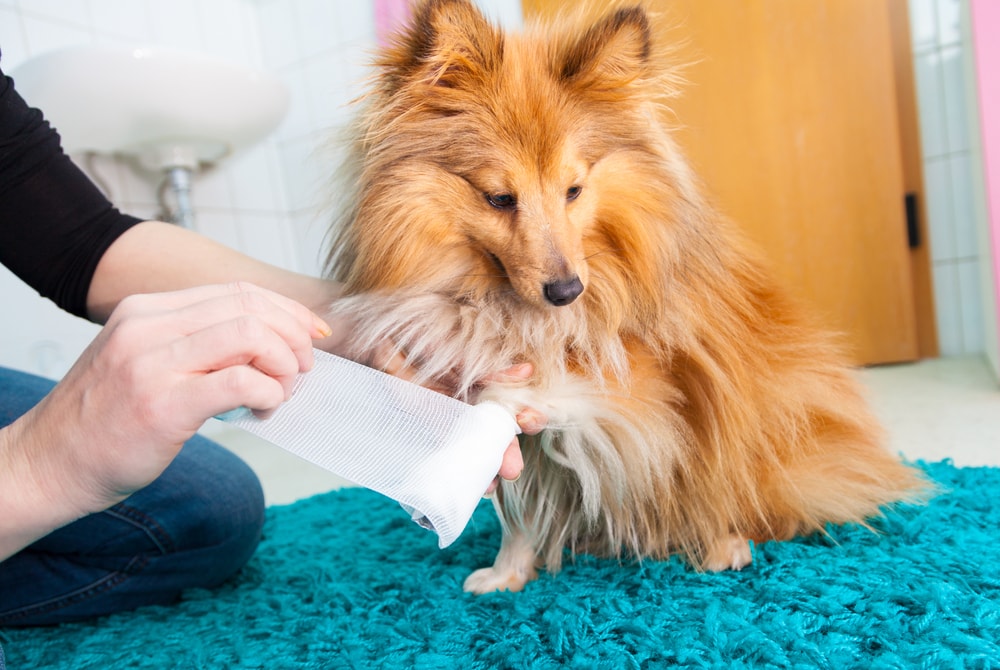
4. Remove the Broken Nail
If a piece of the broken nail is still hanging on, you can cut it away with a nail clipper, making sure to avoid the quick. If it seems difficult, the broken portion is near the quick, or your dog is in pain and does not stay still, then you will need your vet’s help.
If the nail is chipped or part of it has cracked off, you may need to file the remaining sharp portions. You can use a regular file or a special file for pets. Just make sure you do not cause more pain to your dog.
5. Clean and Bandage the Broken Nail
If the damage to the nail is not solved by the above steps then you may need to progress to dressing the wound. After you have stopped the bleeding, wash the area carefully with warm water to remove the dirt. Instead of water and soap, you can use a saline solution (teaspoon of table salt dissolved in a pint of warm water). Pat it dry with a paper towel. Once the foot is clean and dry you can cover the wound with a clean sock or bandage to prevent your dog from licking it. Licking can dislodge the clot, restart bleeding, or introduce an infection. Covering their wound also prevents blood from getting on your clothes or carpet. It is important that bandages are not too tight, as this can impede blood flow to the foot. A cone or E-collar is also helpful; it should be used to prevent licking for 4–5 days.
Once you’ve bandaged your dog’s paw, you can focus on keeping them as comfortable and pain free as possible. Try to limit your dog’s movement. If the injured area is disturbed, the clot could dislodge and restart the bleeding.
Bandaging is definitely an art form and it is easy to get it wrong with potentially severe consequences. This is why it is strongly recommended that although bandaging at home is useful in emergency situations you should then take your dog to the vet clinic for proper bandaging and assessment.

When Should You Contact a Vet?
A broken nail is not usually an emergency, but a badly ripped one can be.
- If the bleeding does not stop
- If your dog is in severe pain
- If the nail is sticking out at an angle and too sore to remove at home
- If it is possible that the last toe bone has come off too (the whole nail is now missing)
How to Prevent Broken Nails in Dogs
To prevent broken nails, it is best to keep them short. You can do this at home, at the veterinary office, or grooming salon. If you want to do this at home, use a nail clipper for dogs. Also, regularly walking your pet on hard surfaces helps dogs wear down their nails evenly.
When you trim your dog’s nails at home, trim them little by little to make sure you don’t cause bleeding. In dogs with white nails, the pulp, or quick, of the nail can be easily seen, and you will know how far to trim. If you accidentally cut into the quick, you will see a blob of blood, and it will be sore. For dogs with black nails, it is best to frequently trim them very slightly.
If your dog’s nails break repeatedly, they may have an unusual medical condition called symmetrical lupus onychodystrophy. This condition affects all nails; they become dry and brittle and break easily. There are also other conditions that can affect nail health, so if your dog keeps breaking toenails we recommend discussing this in a veterinary consultation.
Conclusion
Broken nails in dogs are not always a medical emergency, as most cases can be treated at home. If your dog has broken a nail, don’t panic. Assess the situation and try to stop the bleeding. If the bleeding does not stop or your dog is in a great deal of pain, go to the vet. After you have stopped the bleeding, clean the area thoroughly with water or saline solution. Dry well and bandage it if necessary. Limit your dog’s movements in order to not dislodge the clot and restart the bleeding. If you have any concerns, it is best to get it checked out by your vet.
See Also:
- What Are The Best Materials for Outdoor Dog Bedding? Facts, & FAQ
- Cut Your Dog’s Nail Too Short? Vet Approved Tips & Next Steps
Featured Image Credit: sophiecat, Shutterstock








